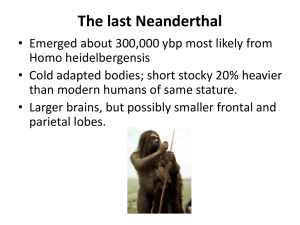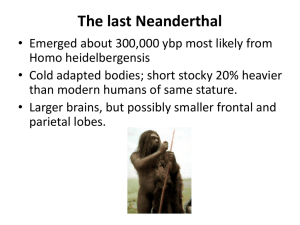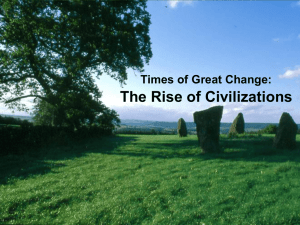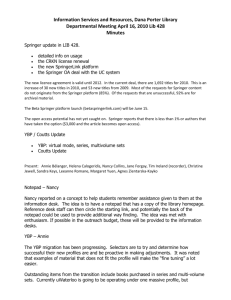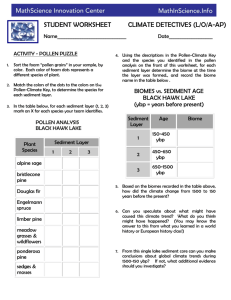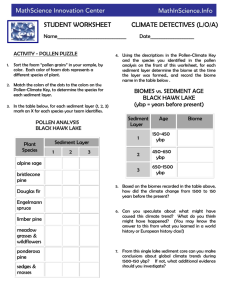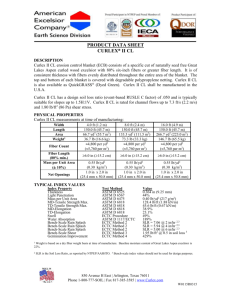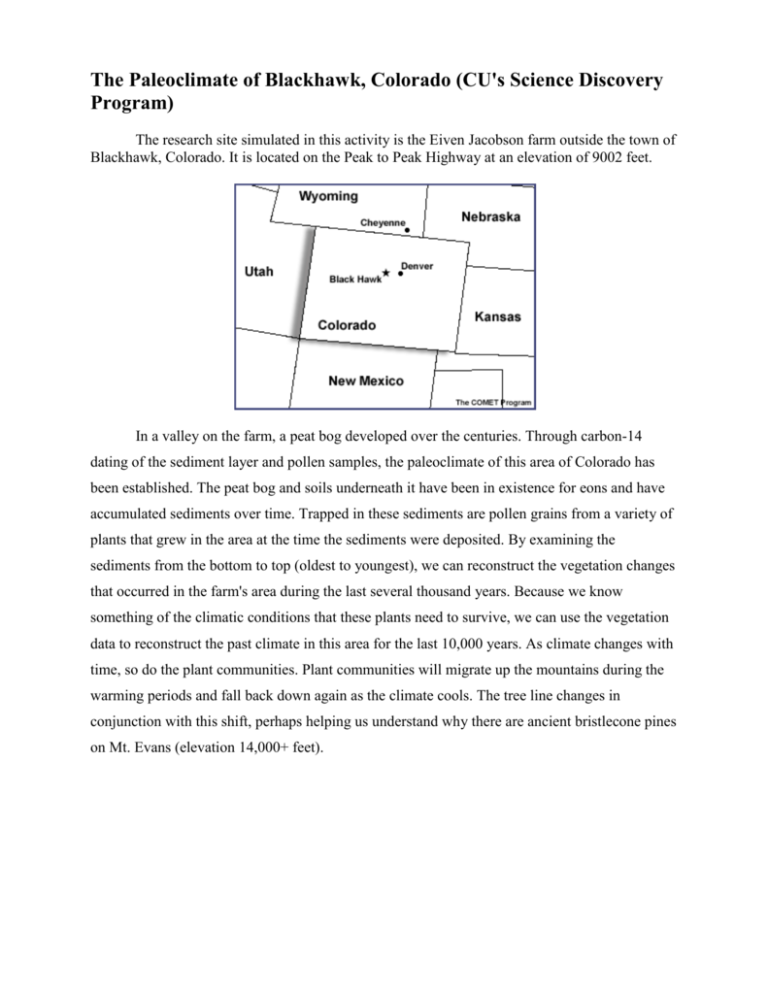
The Paleoclimate of Blackhawk, Colorado (CU's Science Discovery
Program)
The research site simulated in this activity is the Eiven Jacobson farm outside the town of
Blackhawk, Colorado. It is located on the Peak to Peak Highway at an elevation of 9002 feet.
In a valley on the farm, a peat bog developed over the centuries. Through carbon-14
dating of the sediment layer and pollen samples, the paleoclimate of this area of Colorado has
been established. The peat bog and soils underneath it have been in existence for eons and have
accumulated sediments over time. Trapped in these sediments are pollen grains from a variety of
plants that grew in the area at the time the sediments were deposited. By examining the
sediments from the bottom to top (oldest to youngest), we can reconstruct the vegetation changes
that occurred in the farm's area during the last several thousand years. Because we know
something of the climatic conditions that these plants need to survive, we can use the vegetation
data to reconstruct the past climate in this area for the last 10,000 years. As climate changes with
time, so do the plant communities. Plant communities will migrate up the mountains during the
warming periods and fall back down again as the climate cools. The tree line changes in
conjunction with this shift, perhaps helping us understand why there are ancient bristlecone pines
on Mt. Evans (elevation 14,000+ feet).
Layer
Time
Period
#1
150 Years
Before
Present
(ybp) Present
As our temperatures warm from the Little Ice Age, the plants
change as well, back to those that thrive in warmer climates.
Today at approximately 9000 feet, we find ponderosa pines,
meadow grasses, wildflowers, and aspens, which are all
indicative of the milder climate we are experiencing.
650 - 150
ybp
The term "Little Ice Age" gives us an idea of a change that
began to happen climatically at this time. Gone were the warm
days of the Medieval Warming Period and the big chill set in;
cooler temperatures were the norm. Once again the Engelmann
spruce and limber, lodgepole, and bristlecone pines dotted the
landscape.
#2
#3
#4
#5
#6
Description
1,500 - 650
ybp
This period is termed the "Medieval Warming Period." No
longer do the spruces and cold-tolerant plants dominate the
landscapes. The vegetation is also shifting with the change in
temperatures. Now the landscapes primarily consist of
ponderosa pines, Douglas fir, meadow grasses, and
wildflowers.
3,500 1,500 ybp
A cooler and moister period succeeds the past warmer climate.
The predominant vegetation species are Engelmann spruces,
limber, lodgepole, and bristlecone pines, aspen, and wet peat
plants, such as sedges, willows, and mosses. At about 2,000
ybp, the peat from the Jacobson's peat bog began to develop
and grow in this cooler, wetter climate.
8,000 3,500 ybp
This was a warmer era, with the vegetation dominated by
Douglas fir, ponderosa pine, aspen, meadow grasses, and
wildflowers, similar to what we see now on the Jacobson farm.
These species tend to grow best under temperate, somewhat
moist conditions. Forest fires were also quite prevalent during
this time.
10,000 8,000 ybp
The period right after the last glacier was a very cold time with
gradual warming. The cold temperatures at the end of the
Pleistocene period were giving way to the warming trends of
the Holocene. The era was characterized by a very short
growing season. The landscape resembled an arctic/alpine
tundra, with the meadows dominated by alpine grasses, daisies,
alpine sage, and sedges. Scatter trees, the cold-tolerant
Engelmann spruce, some willows, and aspens began to appear
toward the end of this period in scattered tree islands.
© 2011 National Earth Science Teachers Association. Windows to the Universe® is a registered trademark of
NESTA. All Rights Reserved.

